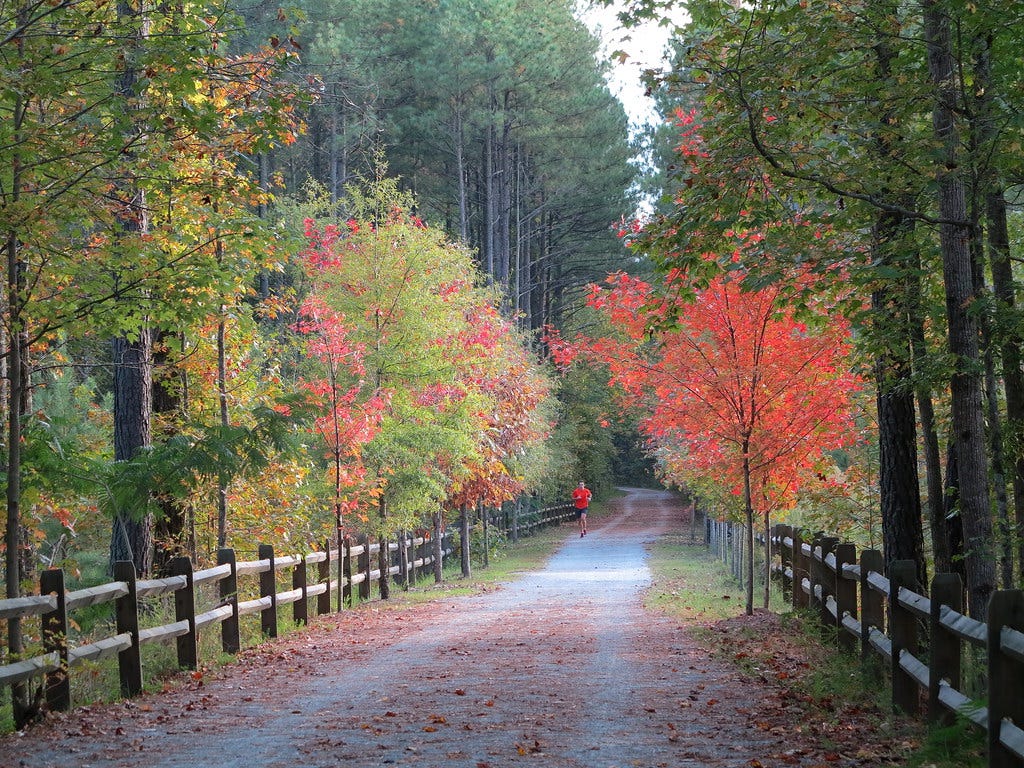Breaking Down the Pros and Cons of Greenway-Development
Spoiler: the pros heavily outweigh the cons.
This is part four of five in a series about greenway-oriented development.

From Atlanta's BeltLine to the Razorback Greenway in Northwest Arkansas to the Urban District Market in Charlotte, cities around the country are leveraging greenways to unlock a new model of sustainable, amenity-rich urban growth. While this greenway-oriented development, or GOD, has sparked concerns, the potential upsides are proving transformative.
By concentrating new housing, offices, retail, and amenities along multi-use trail networks, greenway-oriented projects create a transit-adjacent, location-efficient pattern of development that reduces reliance on cars. This facilitates walkable, bikeable, energized urban districts where mobility and recreation are seamlessly intertwined-- emphasizing daily activity and sustainable transportation options.
High-quality trails and park spaces act as the spinal cord for GOD, centering mixed-use communities, green amenities, food options, and placemaking features to create a cohesive experience for the visitor. Placing housing directly alongside safe, connected routes for walking, running, and cycling creates built-in recreational opportunities and incentives for active living right outside one's front door. Plus, having these accessible destinations will only further increase use.
Perhaps the biggest pro for greenway-oriented districts is the built-in base of residents, workers, and visitors regularly interfacing with and benefitting from the trail networks. This expanded awareness and usage helps spur maintenance, programming, and community stewardship of these public amenities.
Of course, concerns about overcrowding, privatization, and loss of serenity along popular greenways are valid. Concentrating too much development directly adjacent to sensitive trail corridors risks degrading the very outdoor experiences and natural character that greenways are meant to protect and showcase.
This is why greenway-oriented districts must strike a careful balance through physical and regulatory buffering. Strategies like setting buildings and infrastructure back from trail corridors, preserving generous greenbelts, and implementing environmental performance standards are crucial to mitigate impacts while still activating urban connections to nature.
Another difficulty faced by many planners is the rigidity of zoning codes. Traditional development regulations make it very difficult to integrate greenways into the core design of buildings and communities. Requirements around setbacks, parking, density, and permitted uses often don't accommodate this new type of urban form.
Furthermore, despite the public enthusiasm for parks and greenways, private real estate capital has been slow to appreciate the potential premium that can be captured by developing directly oriented towards high-quality greenspace. It’s a newer method to be sure, and one that has yet to be universally proven.
As cities continue exploring greenway networks as frameworks for more sustainable patterns of urban growth, projects like the BeltLine, Razorback Greenway, and GOD in planning across the South, are demonstrating how bringing the built and natural environments into closer alignment can truly unlock the best of both worlds - resilient economic opportunities balanced with outdoor accessibility for all.
Sonia Birla is a student at UNC Charlotte majoring in Finance, Geography, and International Studies. She is the James Hardie Fellow for Urban Development Spring 2024.


